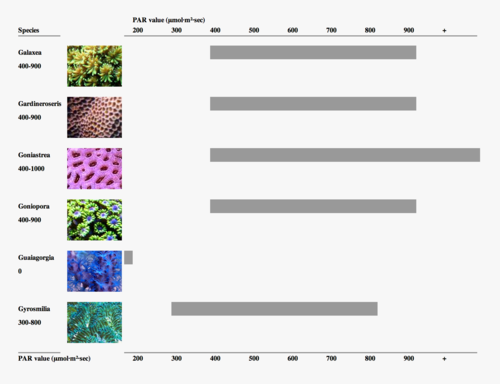Its my turn on the PAR meter but before measuring, I wanted good resource listing all coral with the optimum PAR levels.
Lots of google searches only took me to forum posts where people shared their opinions on a few coral. Then I found a microsite built by bluemoonaquatics where they had a full list of coral with the PAR ranges.

Problem was that the site was unusable with an overlay that I couldn’t close. So I took screenshots of each subsection and compiled it into a PDF.
Hope its helpful
http://bit.ly/coralPAR
Lots of google searches only took me to forum posts where people shared their opinions on a few coral. Then I found a microsite built by bluemoonaquatics where they had a full list of coral with the PAR ranges.

Problem was that the site was unusable with an overlay that I couldn’t close. So I took screenshots of each subsection and compiled it into a PDF.
Hope its helpful
http://bit.ly/coralPAR
